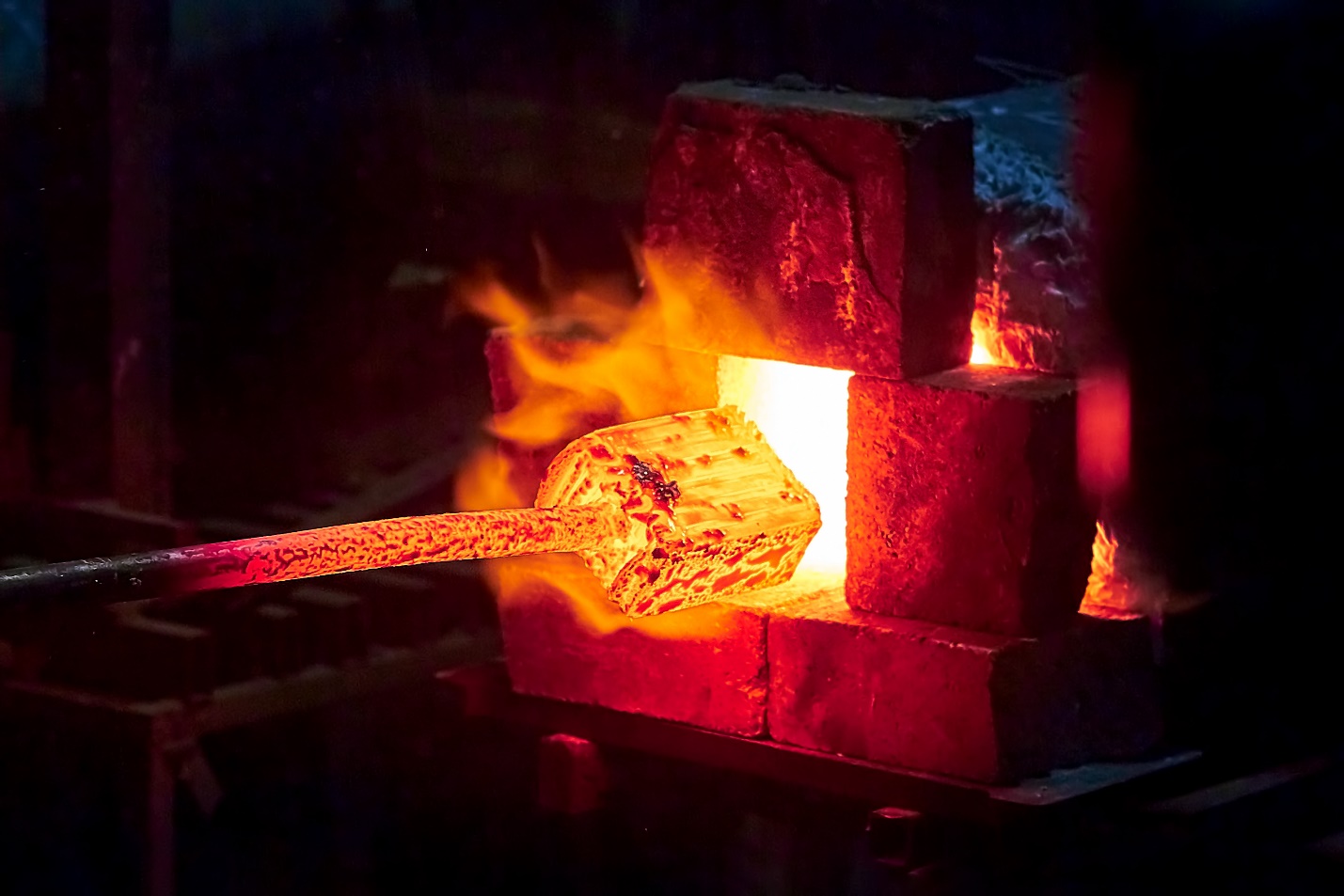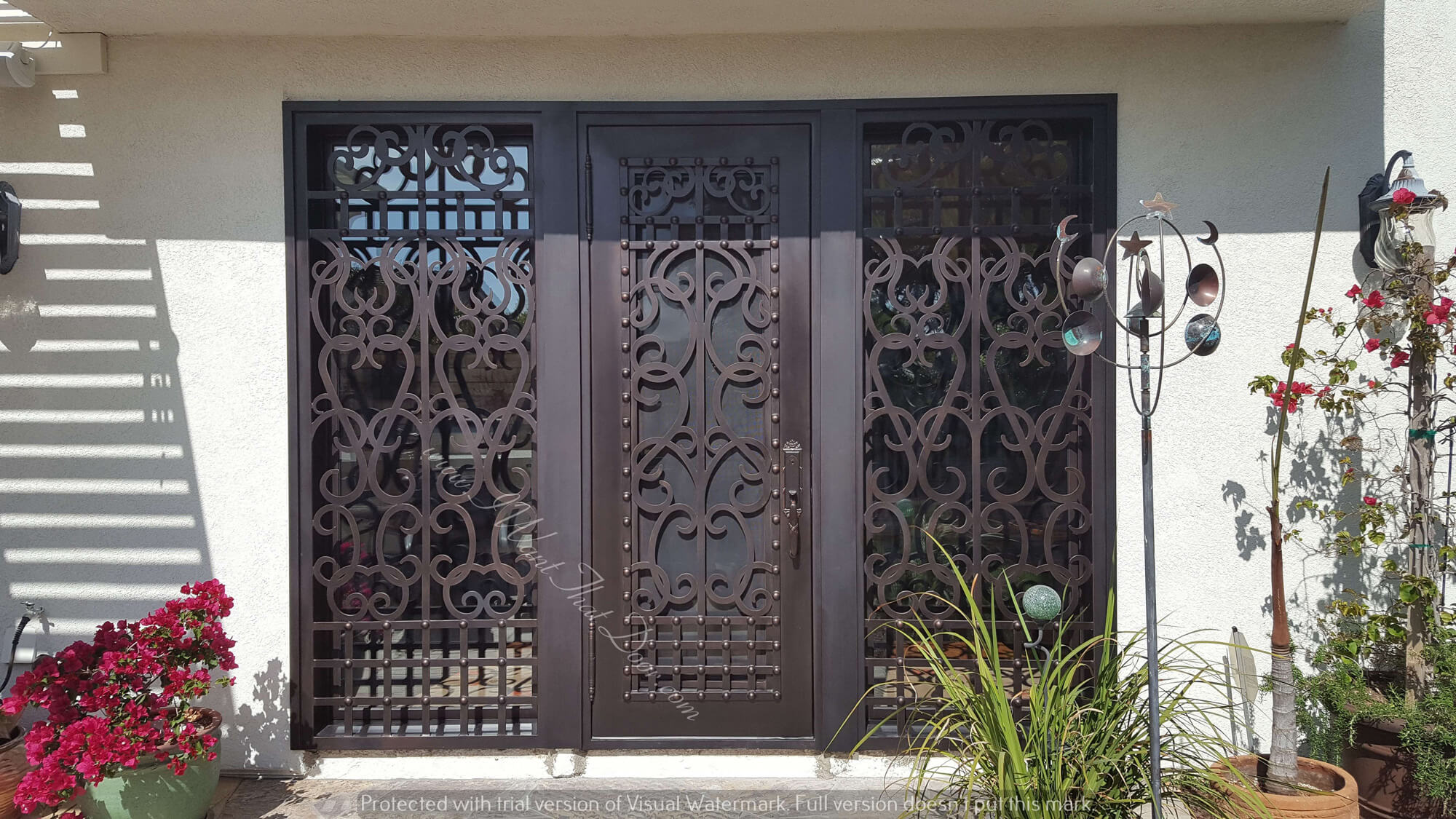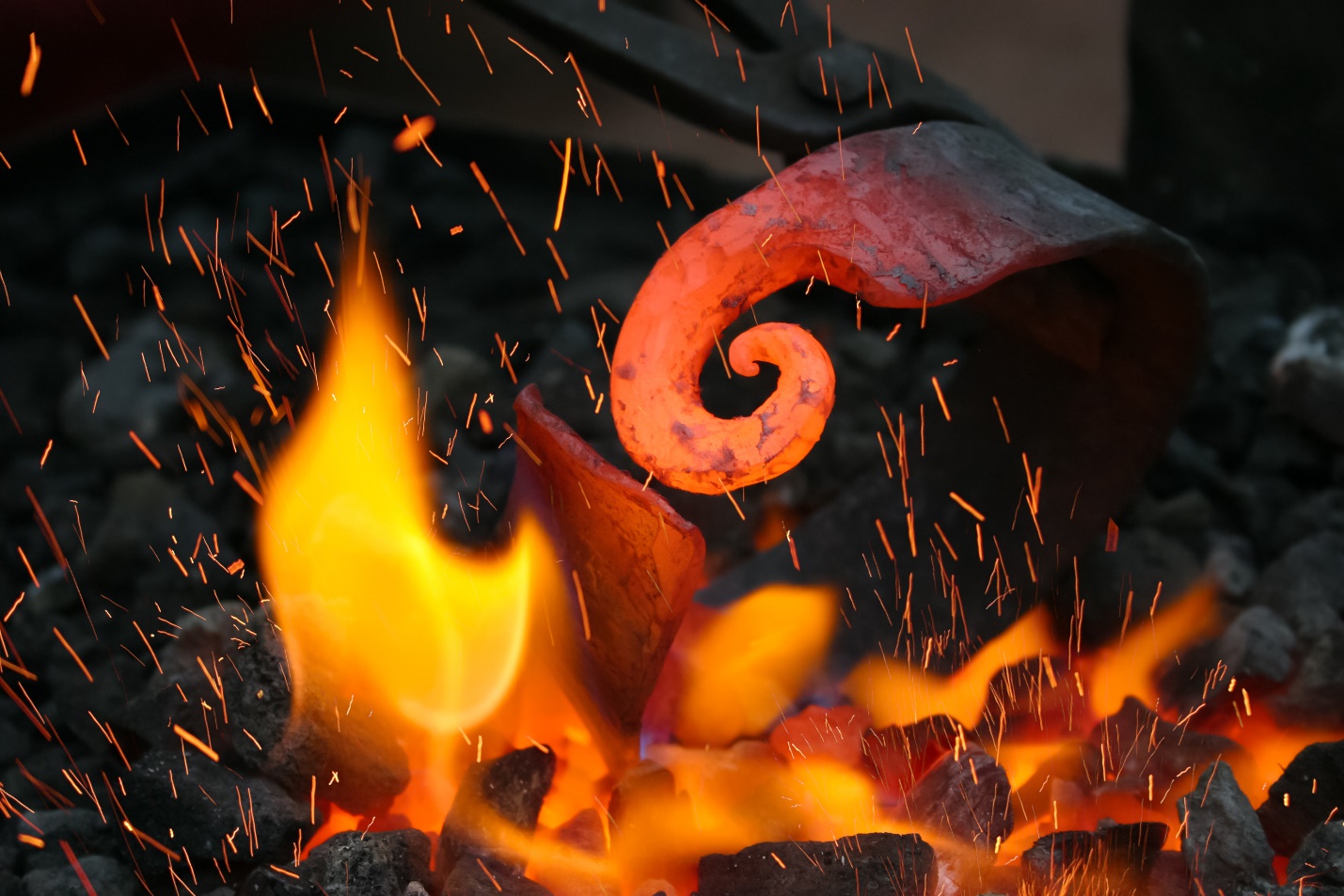At Universal Iron Doors, we are known for our stylish and durable product line. Our line of custom wrought iron doors is large and offers an extensive range of choices. Wrought iron is preferred for its high tensile strength while its soft, ductile, fibrous nature allows it to be manufactured into a limitless range of styles. But how do you tell authentic wrought iron from something totally different?
What Is Wrought Iron?
Sometimes mistakenly called rod iron, wrought iron is a low-carbon iron alloy. The term is also used to describe decorative ironwork or low-carbon steel pipe. During manufacturing, wrought iron can be heated and reheated, while welding can yield inferior results due to oxides or inclusions. Heating processes help work the material into the desired shape. In the past, the heated iron and slag mixture would be removed as a single mass. It would then be worked, or wrought, with a hammer to get rid of the slag—or most of it—and shape the iron.
Wrought Iron vs. Cast Iron
Wrought iron has less carbon than cast iron. With so little carbon—as little as 0.25% compared to cast iron’s roughly 2% to 4%—heat treatment will not yield the desired level of hardening. Like its counterpart, wrought iron is made by smelting a semi-fused mass of pure iron globules that are, in part, surrounded by slag. However, cast iron is poured into a mold where it solidifies.
Slag, a by-product of smelting, contains a mix of silicon, sulfur, aluminum, and phosphorous. Floating on top of molten metal, it protects the wrought iron from oxidation. The slag itself can then be used as aggregate for concrete, road pavement, or a source of phosphate fertilizer. Up to 2% of a wrought iron sample may be slag material.
How to Tell It’s Wrought Iron
Wrought iron is unique in that it bends rather than breaks, allowing delicate forms to be crafted. Whether used for doors, gates, or railings, it is often formed into repetitive patterns. The workmanship is often quite intricate. Wrought iron and iron steel may not look that different to the untrained eye, and layers of paint can obscure any subtle differences in appearance. Overall, wrought iron is particularly grainy, giving it a texture similar to wood.
Steel has more of a tendency to corrode. Wrought iron is more resistant to corrosion, although it can rust over time. Aged steel often has more active corrosion plus signs of electrical welding. The level of corrosion observed can give it away, especially if it runs out of the joints and causes staining.
Wrought iron can also take on a certain texture. This is most identifiable through earlier time periods. For example, wrought iron sections from the eighteenth century tend to have uneven surfaces and sharp corners while those from the nineteenth century often have more curvature. The material was popular long before other methods of steelmaking were developed.
With the use of steel in the 1800s and drop in steel production prices in the 1960s, wrought iron became less popular and more costly to produce, although it now remains in demand as a luxury architectural material.

Testing Techniques
There are several different tests to determine whether a metal is wrought iron. Metalworkers and blacksmiths who know how to identify wrought iron may use the following techniques:
- Spark Test: A grinding tool is put to the sample to examine the sparks produced. The iron sample is often compared to mild steel on the same grinder to account for variability. Wrought iron, being carbon-free, will throw long sparks. These have few branches. Puddled wrought iron tends to have a reddish spark while steel produces white sparks. Both wrought and pure iron spark the same.
- Break Test: A 1/2-inch square sample is sawed about half-way through and then bent. The resulting break should show fibrous grains that look similar to wood. Higher quality wrought iron has finer grains; if it is triple refined, the grains may be hard to distinguish. The sample should be compared to mild steel, which will exhibit smooth fracturing.
- Forgeability Test: By striking the iron with a hammer, an expert can tell by the feel whether the sample is wrought iron or low carbon steel. This test is almost as reliable as others when performed by someone with experience.
- Hardenability Test: Quenching does not cause wrought iron to harden. When mild steel is heated, it can harden enough to blunt a center punch. However, low-carbon steel hardens at a higher temperature than other types of steel.
- Polish/Grain Test: The bar sample is polished in a plane parallel to its length. With the bright surface exposed, the sample is examined to find linear slag inclusions that form the grain.
Why Check for Fake Wrought Iron
Faux wrought iron can be lightweight and inexpensive. It can also be formed into nearly any design. Nonetheless, it does not have the timeless qualities that real wrought iron has. Nor is it as long-lasting. Wrought iron can last for many decades—or longer—while requiring little maintenance.
Where to Get Genuine Custom Wrought Iron Doors

Owned and operated by fifth-generation blacksmiths, Universal Iron Doors manufactures numerous single and double entry door styles. We also produce iron gates, garage doors, and hardware. Numerous finish and glass options are available and all our doors are foam-injected to prevent rust and improve weather resistance. Our wrought iron doors feature pre-hung steel jams, pre-drilled mounting brackets, hinged glass panels, hinged glass door locks, and a roller catch system for pull handle models. Heavy-duty mesh screens are available on any new order.
Continue browsing to view our inventory and learn about measuring, installing, and cleaning your door. Check out our financing options as well. Our staff is ready to take any questions you have. Feel free to call us at 818-771-1003 or contact us online to get a quote, today!

